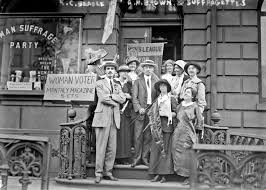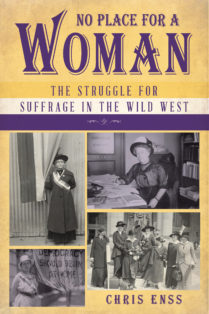Enter now to win a copy of the new book
No Place for a Woman: The Fight for Suffrage in the Wild West

In 1911, actress, playwright, and “suffragette” Vida Sutton coined the term “suffragent.” A suffragent referred to a man who was big enough to see that women should be given the right to vote. “This type of man is one of the most powerful allies of the cause of women,” Vida explained to a reporter for the New York Times. “He not only does not hinder but does all that he can to help.”
From the time the woman suffrage movement was first launched in 1846, there were many prominent suffragents who played significant roles in helping women secure the right to vote. At the urging of Elizabeth Cady Stanton, California senator Aaron Augustus Sargent introduced the first federal woman suffrage amendment in 1878. The amendment was reintroduced in every succeeding Congress until adopted in 1920. “I believe the time is rapidly coming when all men will conclude that it is no longer wise or judicious to exclude one half of the intelligence and more than one half of the virtue of the people from the ballot box,” Sargent remarked in April 1878.
San Francisco mayor Adolph Sutro echoed those sentiments in March 1896. “I believe equality is the basic principle of our government—hence women should assume all the responsibilities that arise out of her moral and mental endowments as a citizen,” Sutro told the San Francisco Chronicle. “Woman’s advent as a voter will be the means through which the government may be perpetuated, as embodying justice, equality, and righteousness.”
Frederick Douglass, American abolitionist, orator and lecturer, was present at the Seneca Falls Women’s Rights Convention of 1848 and advocated for women’s rights along with abolition and the rights of African Americans. At a meeting of the National Council of Women in 1895, he reminded an enthusiastic crowd of what he had written about the issue in 1848. “A discussion of the rights of animals would be regarded with far more complacency by many of what are called the wise and the good of our land than would be a discussion of the rights of women. . . . We hold women to be justly entitled to all we claim for man.”

To learn more about how women won the right to vote in the West read
No Place for a Woman
Visit www.chrisenss.com to enter to win a copy of No Place for a Woman.

